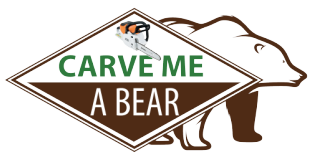Mascots have a rich and diverse history that spans cultures, industries, and centuries. These symbolic figures, often representing a team, brand, or organization, play a crucial role in fostering a sense of identity, unity, and enthusiasm among supporters. The history of mascots can be traced back to ancient times when tribes and communities used animal skins and masks to embody the spirits they believed influenced their lives. With this in mind, we at Carve Me A Bear! Chainsaw Carvings would like to discuss the history of mascots.
How have Mascots Changed Over Time?
Mascot Term. The term “mascot” itself has its roots in French, where it originally referred to a talisman or charm. The concept evolved over time, finding its way into the realm of sports in the late 19th century. One of the earliest instances of a sports mascot can be traced to 1880 when a student at the University of California, Berkeley, brought a live bear to a baseball game. This event marked the beginning of a trend where schools and teams started adopting animals as symbols of strength, agility, and tenacity.
Growth. In the early 20th century, the popularity of mascots grew as sports teams and organizations sought unique ways to engage fans and build team spirit. The use of costumed individuals to represent teams became more common, with the intent of entertaining and energizing the crowd. The Chicago Cubs’ unofficial mascot, “Billy the Goat,” gained fame during the 1945 World Series when its owner cursed the team, allegedly leading to the Cubs’ long-standing championship drought.
Entertainment Industry. The entertainment industry also played a significant role in popularizing mascots. During the 20th century, characters like Mickey Mouse and Bugs Bunny became cultural icons, with their images adorning merchandise and serving as ambassadors for their respective companies. These animated mascots transcended their original roles and became symbols of joy and nostalgia for generations.
Commercial Branding. The advent of commercial branding in the mid-20th century further fueled the use of mascots as corporate symbols. Companies realized the marketing potential of these characters in creating memorable brand identities. Notable examples include Tony the Tiger for Kellogg’s Frosted Flakes and the Michelin Man for the tire company. These mascots became inseparable from their brands, contributing to the success of marketing campaigns.
Modern Mascots. In recent decades, the digital age has introduced virtual mascots, often used in online spaces to represent brands or convey a specific message. These virtual characters leverage the power of social media and digital platforms to connect with audiences on a global scale. The rise of esports has also witnessed the emergence of mascots for gaming teams, adding a new dimension to the tradition.
Custom Chainsaw Carvings Picked Up from Lincoln, Montana & Nampa, Idaho
The history of mascots is a fascinating journey that spans ancient rituals, sports culture, entertainment, and marketing. From early tribal symbols to the costumed characters we see today, mascots continue to evolve and adapt to the changing dynamics of society. Whether representing a sports team, a brand, or an organization, mascots play a vital role in creating a sense of identity and fostering a connection between individuals and the entities they represent. If you have a favorite mascot, call Carve Me a Bear Chainsaw Carvings to turn the dead stump into an inviting mascot or have us create a chainsaw carving of your favorite mascot for your collection.






